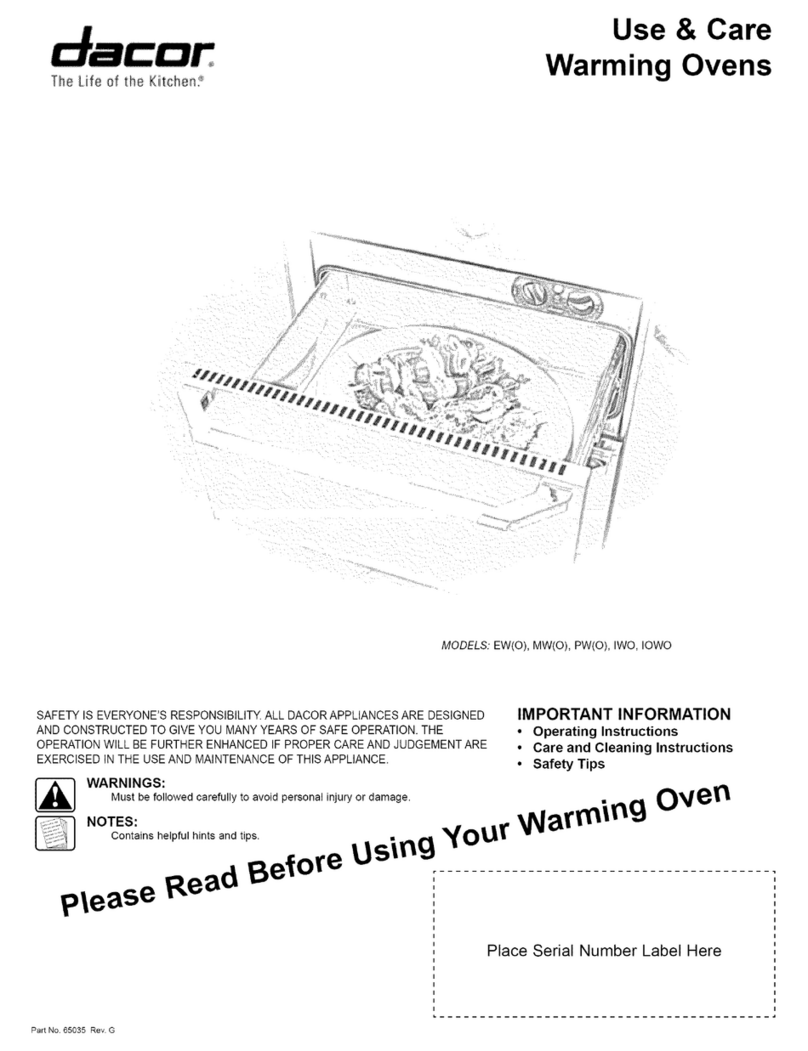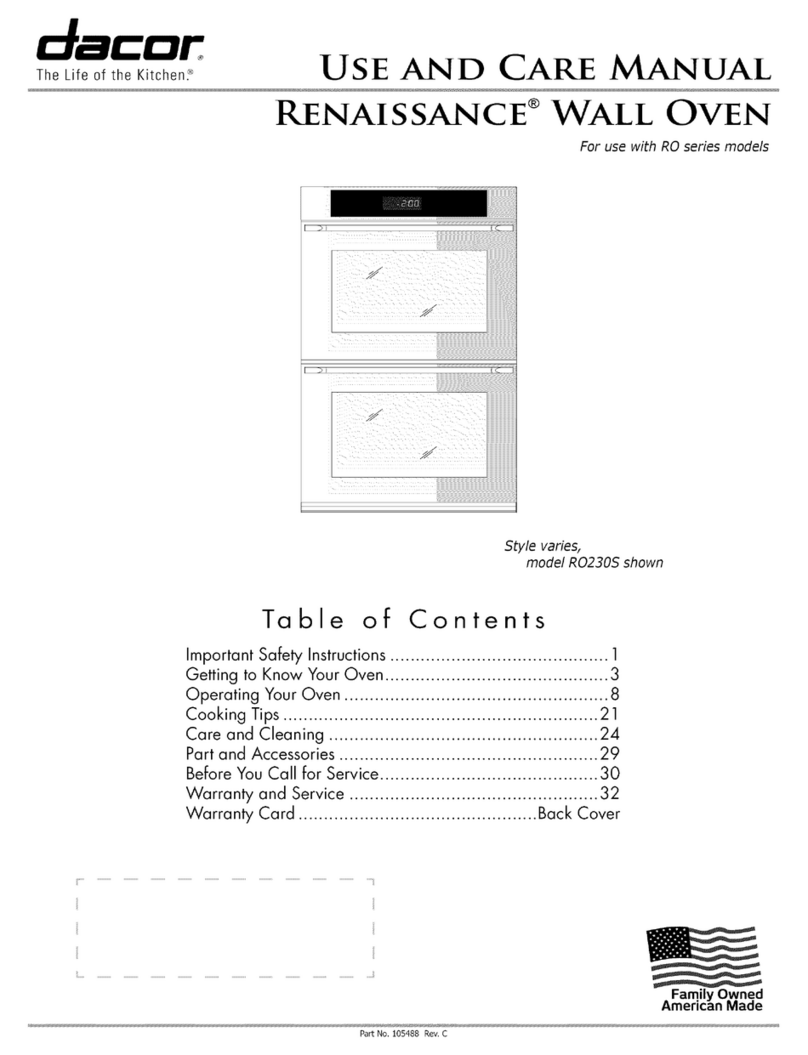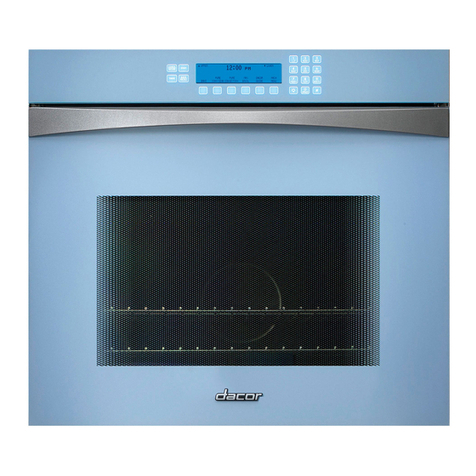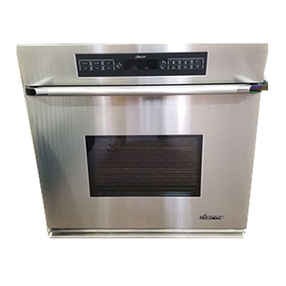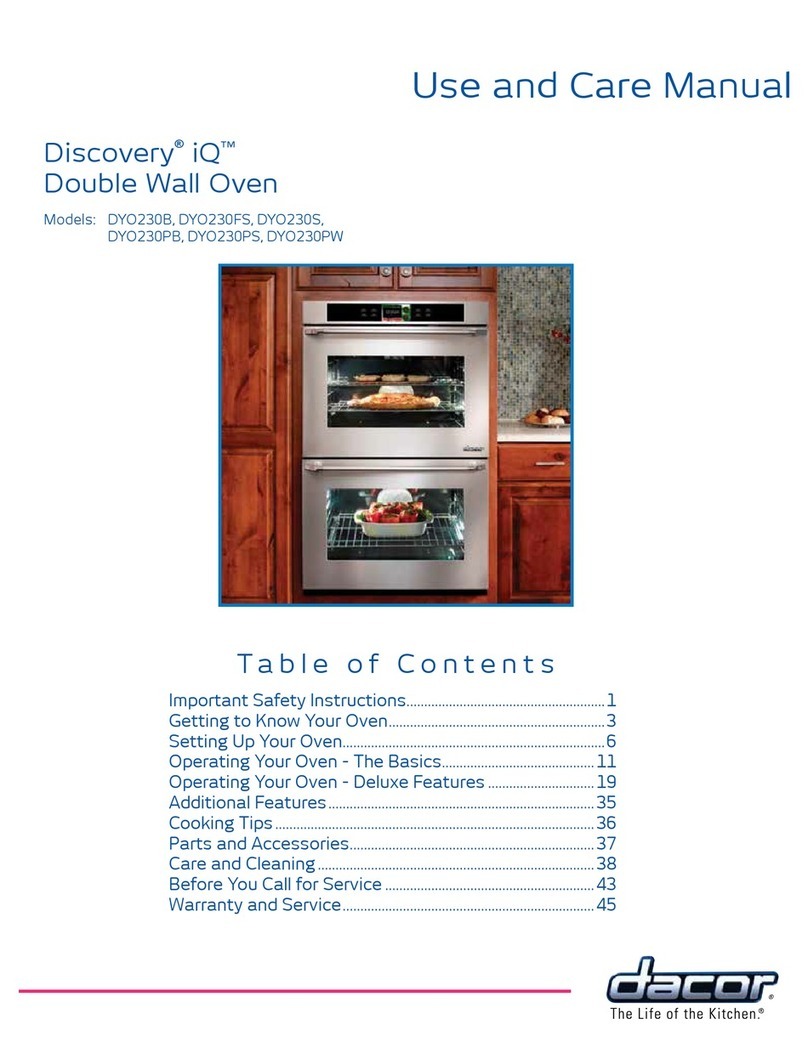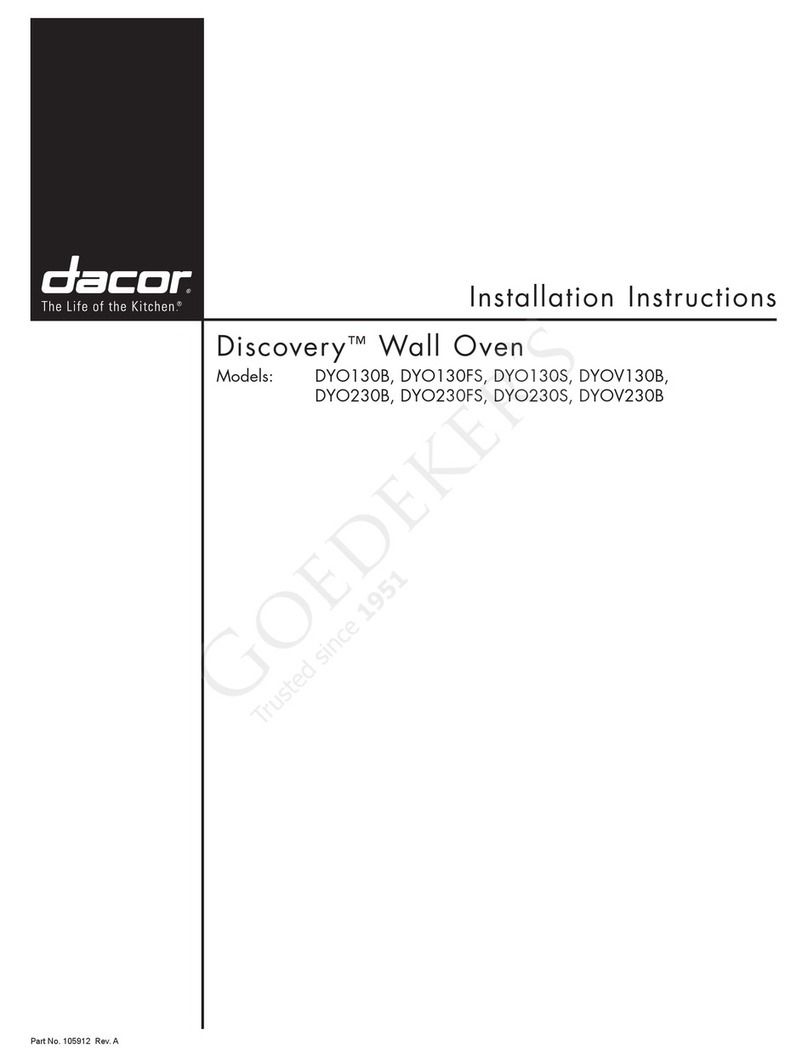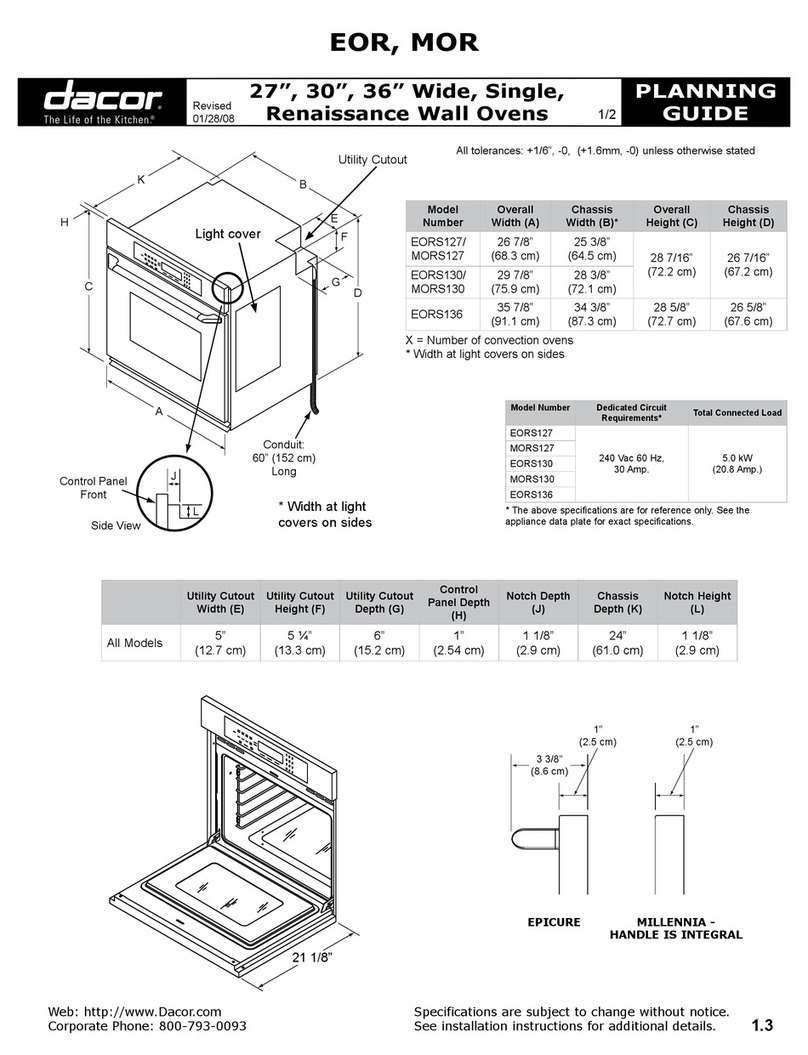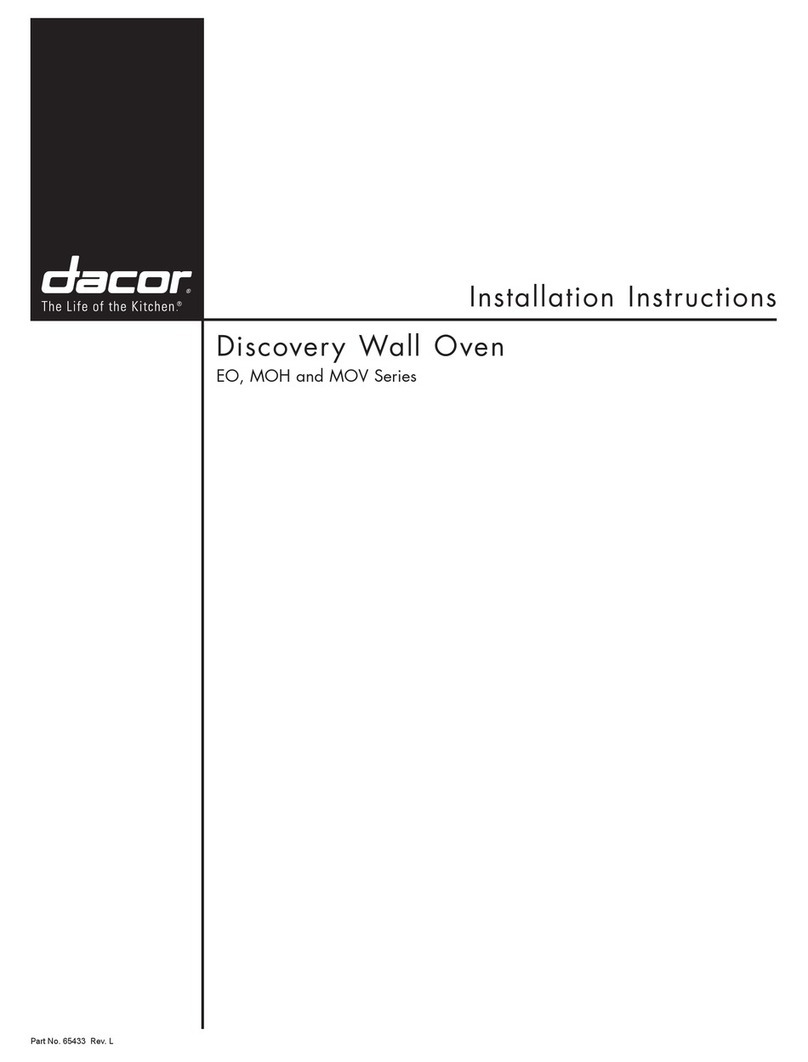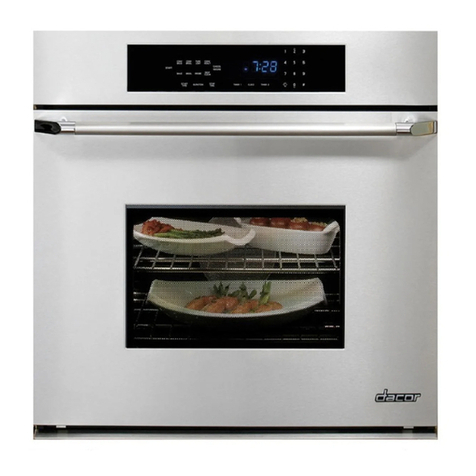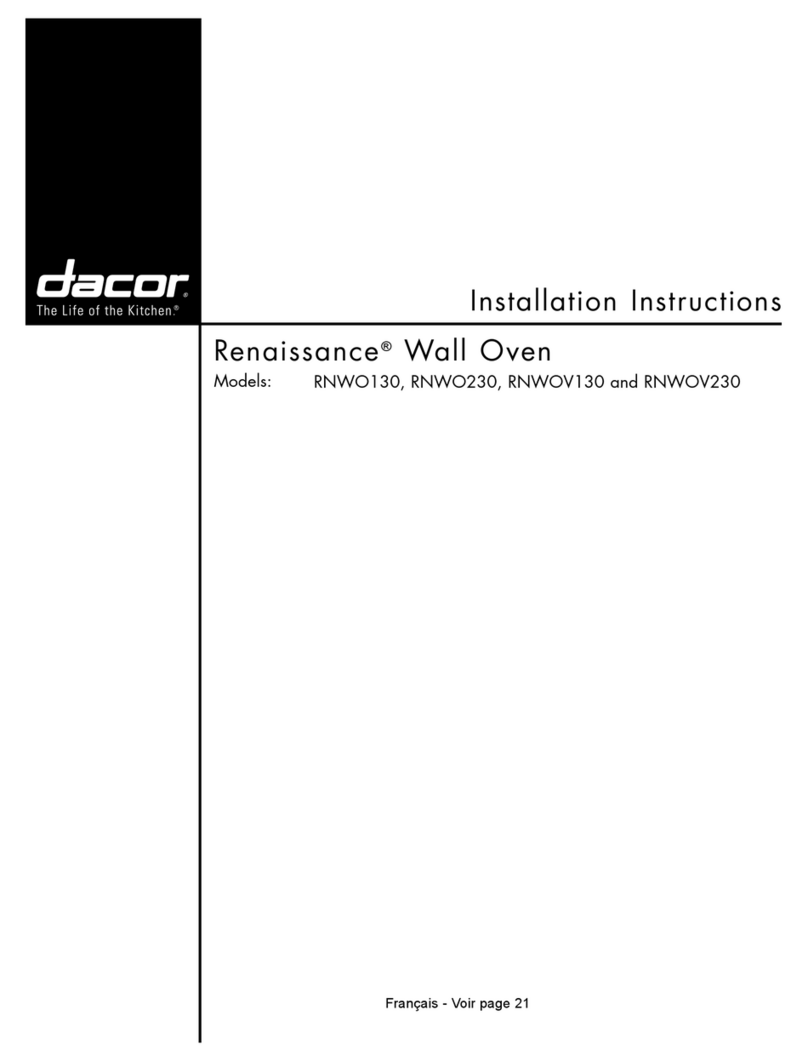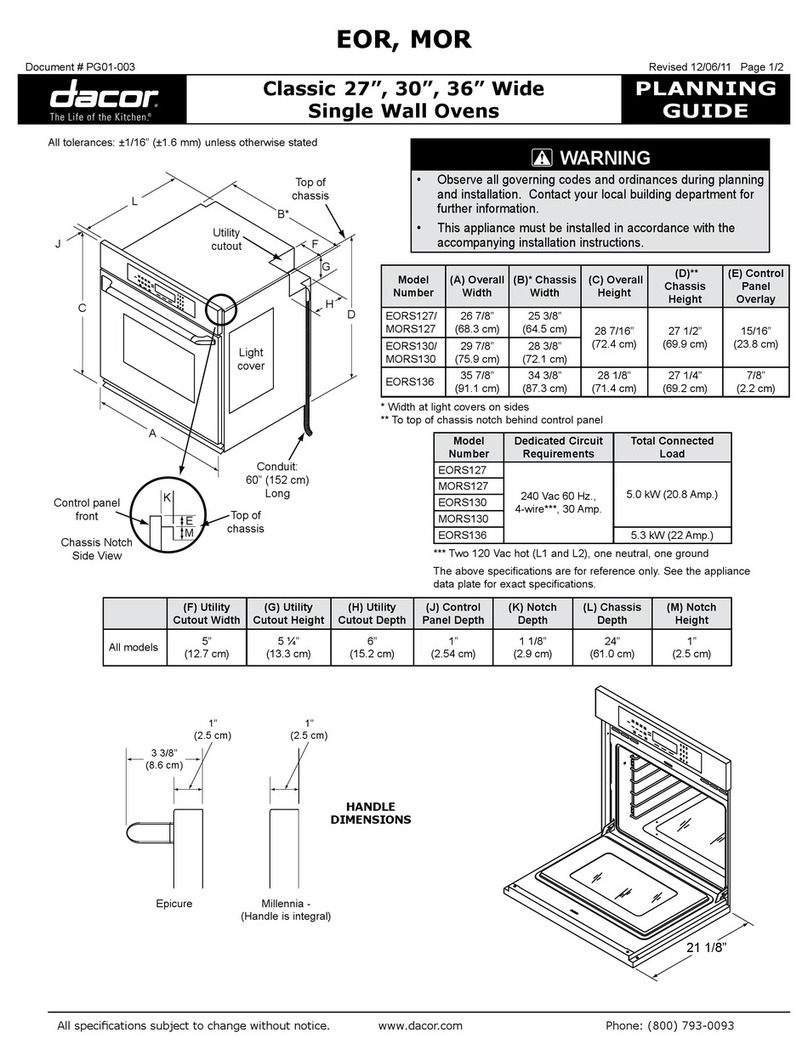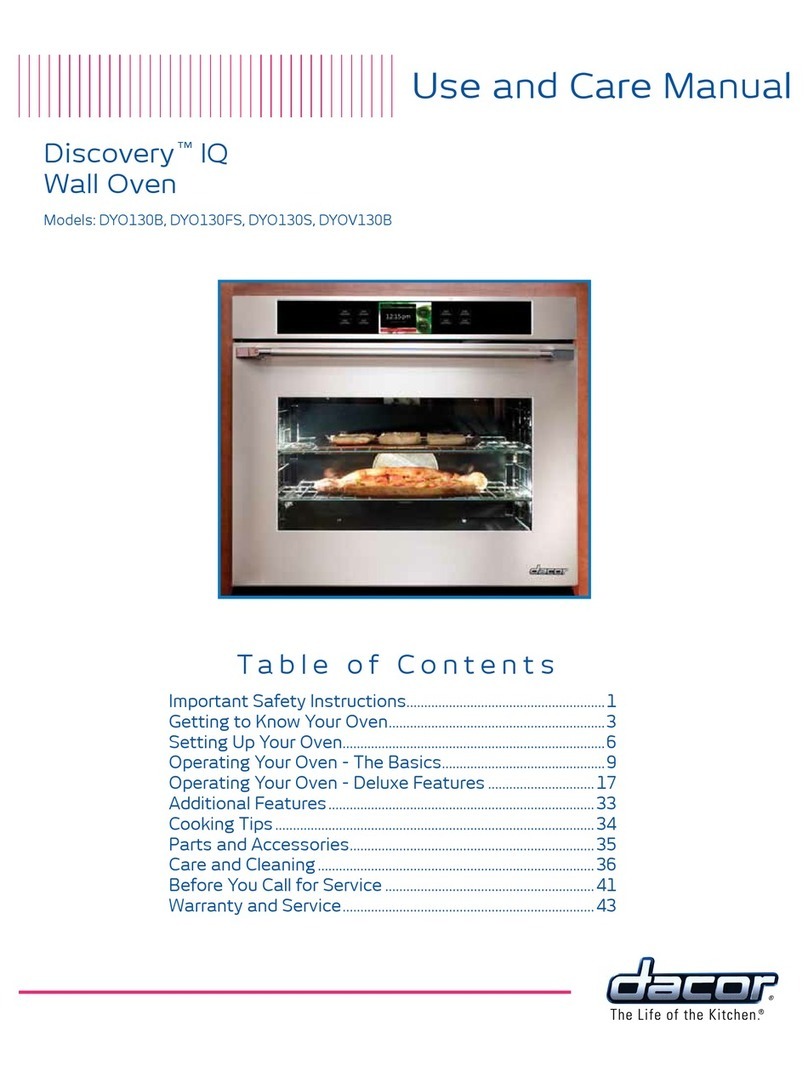
Precautions
To reduce the risk of fire, electric shock, serious injury or death when usingyour oven, follow basic safety precautions,
including the following:
WARNING
• If you receive a damaged product,immediately contact your
dealeror builder. Donot install or usea damagedappliance.
• Makesure that the oven has been properlyinstalled
and grounded bya qualified installeraccording to the
accompanyinginstallationinstructions. Have the installer
showyou the locationof the fuse or junction box so that you
knowwhere and howto turn off powerto the oven.
• Do notinstall, repairor replaceany part of the oven unless
specificallyrecommendedin the literatureaccompanying it. A
qualifiedservice technicianshould perform all otherservice.
• Beforeperforming anytype of service, make surethat the
electricalpowerto the oven is turned off at the circuit breaker
orfuse box.
• Only use the ovenfor cooking tasks expectedof a home
applianceas outlinedin this manual. This oven is not
intendedfor commercial use.
DONOT TOUCHTHE SURFACESOF THE OVEN DURING
3R IMMEDIATELYAFTER USE.
•Makesure individualswho usethe ovenare able to operate
it properly.
• Neverallow anyone, including childrento sit, stand or climb
on any partof the oven includingthe door. Doingso may
causetipping, damage, serious injuryor death.
• Do notleave childrenalone or unattended in the area around
the oven. Do notallow childrento playwith the controls, pull
on the handle(s)or touch other parts of the oven.
• Do notstore itemsof interest to childrenabove the oven.
Childrencould be burned or injuredwhile climbing on the
appliance.
• Do nottamper with the controls.
•To preventthe unit from tippingforward and to provide
a stable installation, make surethe oven is securedto
the cabinet according to the accompanying installation
instructions.
• Do notheat unopened food containers such as baby food
jars and cans. Pressurebuild up may cause the container to
burstand cause injury.
. Do notusewater on greasefires.A violent steamexplosion
may result.Smother any flameswith a lid, cookie sheet
or flat tray. Use bakingsoda or a foam extinguisherto
extinguish flaming grease. Be careful to avoid getting burned.
• Keepflammable items such as paper,cardboard, plastic
and cloth away from and out ofthe oven. Do not allow pot
holderstotouch hot surfaces.
WARNING
•Do notwear loose or hangingapparel while usingthe oven.
Do not allowclothing to come intocontact with the interiorof
the oven and surroundingareasduring and immediately after
use.
• Do not usetowels or bulkycloth as pot holders.
• Do not usethe oven for storage.
• Cleanand maintainthe oven regularlyas instructed in this
manual. Keepthe entireoven free of greasethat could catch
fire.
- Do nottouch the outside surfaces ofthe ovenduring the
self-cleancycle. They wilt be hot.
• Use cookwareonly for its intendedpurpose. Checkthe
manufacturer'srecommendationsbefore useto determine
if a utensil is suitable for usein an oven. Certaintypes of
glass, ceramic and earthenware are not suitable for use in
the oven. Personalinjury or damage may result from the
improperuse of cookware.
• Exercisecautionwhen opening the ovendoor. Let hot air or
steamescape before lookingor reaching inside.
• Use extremecaution ifadding water to food in the oven. The
steamcan cause serious burnsor scalds.
- Use only dry pot holderswhen removingfood and cookware
from the oven. Wet pot holders cancause steamburns.
• Foryour safety,do not usethe oven to cook withoutthe
convectionfitter(s) installed.When the filter is not installed
the spinning fan bladesat the back of the ovenare exposed.
. Do notallow food to sit in the ovenfor morethan one hour
beforeor after cooking. Eatingspoiledfood can result in food
poisoning.
, Do not leaveobjects, such as aluminum foil, the meat probe
or cookie sheets on the bottom ofthe oven. Do not allow
the broil elementson the ceilingof the oven chamberto be
covered up. Do not linethe ovenwith aluminumfoil or other
materials. Doingso may cause the oven or the items in it to
overheat,creating a fire hazardor causing propertydamage.
, Non-stickcoatings,when heated,can be harmfulto birds.
Removebirdsto a separate,well-ventilated room during
cooking
2


